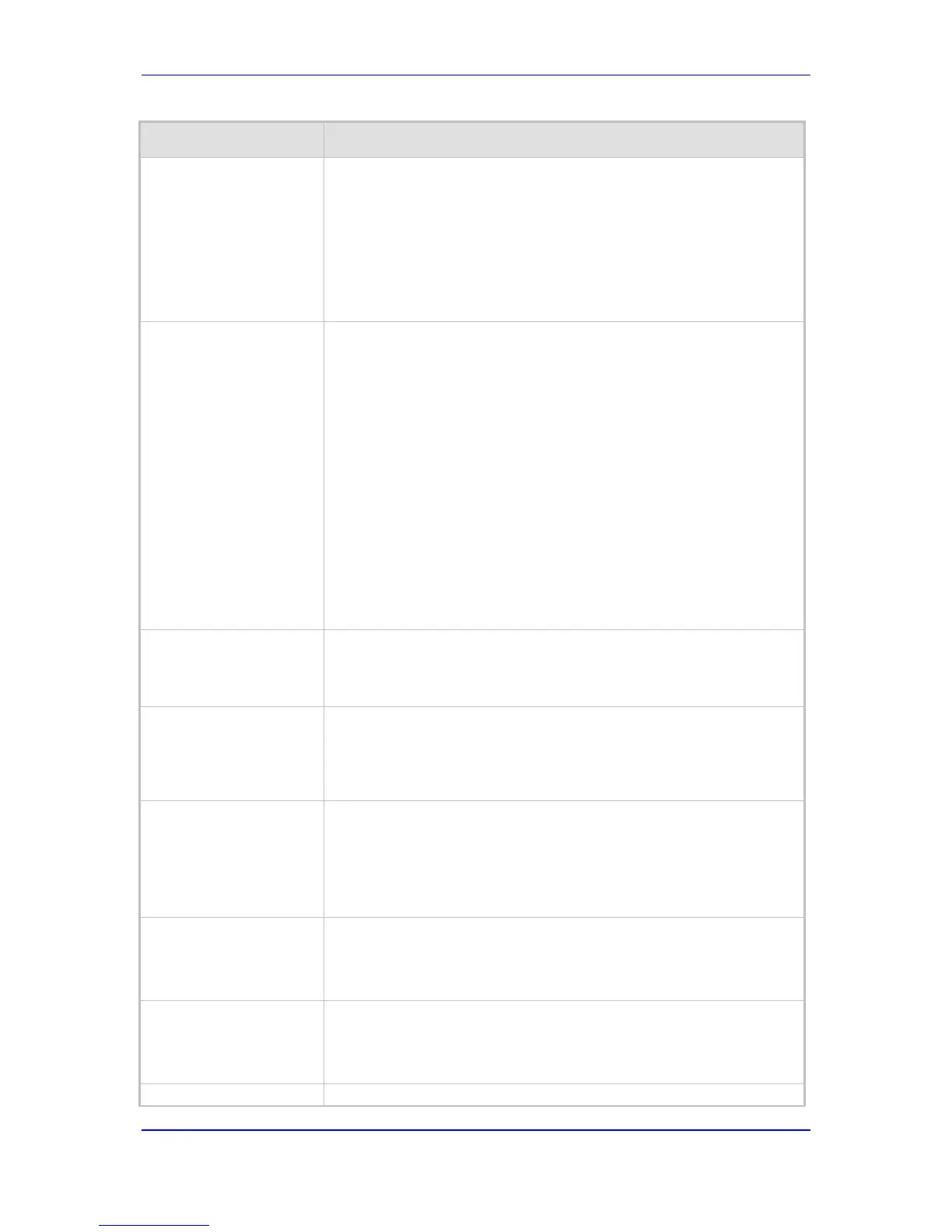Version 6.6 827 Mediant 800 MSBR
User's Manual 66. Configuration Parameters Reference
responses, see Mapping PSTN Release Cause to SIP Response on
page 324.
When the Trunk is disconnected or is not synchronized, the internal
cause is 27. This cause is mapped, by default, to SIP 502.
For mapping SIP-to-Q.931 and Q.931-to-SIP release causes, see
Configuring Release Cause Mapping on page 319.
For a list of SIP responses-Q.931 release cause mapping, see
'Alternative Routing to Trunk upon Q.931 Call Release Cause Code'
on page 345.
Web: Enable Microsoft
Extension
CLI: microsoft-ext
[EnableMicrosoftExt]
Enables the modification of the called and calling number for numbers
received with Microsoft's proprietary "ext=xxx" parameter in the SIP
INVITE URI user part. Microsoft Office Communications Server
sometimes uses this proprietary parameter to indicate the extension
number of the called or calling party.
[0] Disable (default)
[1] Enable
For example, if a calling party makes a call to telephone number
622125519100 Ext. 104, the device receives the SIP INVITE (from
Microsoft's application) with the URI user part as INVITE
sip:622125519100;ext=104@10.1.1.10 (or INVITE
tel:622125519100;ext=104). If the parameter EnableMicrosofExt is
enabled, the device modifies the called number by adding an "e" as the
prefix, removing the "ext=" parameter, and adding the extension number
as the suffix (e.g., e622125519100104). Once modified, the device can
then manipulate the number further, using the Number Manipulation
tables to leave only the last 3 digits (for example) for sending to a PBX.
EMS: Use SIP URI For
Diversion Header
[UseSIPURIForDiversion
Header]
Defines the URI format in the SIP Diversion header.
[0] = 'tel:' (default)
[1] = 'sip:'
[TimeoutBetween100An
d18x]
Defines the timeout (in msec) between receiving a 100 Trying response
and a subsequent 18x response. If a 18x response is not received
within this timeout period, the call is disconnected.
The valid range is 0 to 180,000 (i.e., 3 minutes). The default is 32000
(i.e., 32 sec).
[EnableImmediateTrying
]
Determines if and when the device sends a 100 Trying in response to
an incoming INVITE request.
[0] = 100 Trying response is sent upon receipt of a Proceeding
message from the PSTN.
[1] = (Default) 100 Trying response is sent immediately upon receipt
of INVITE request.
[TransparentCoderPres
entation]
Determines the format of the Transparent coder representation in the
SDP.
[0] = clearmode (default)
[1] = X-CCD
[IgnoreRemoteSDPMKI]
Determines whether the device ignores the Master Key Identifier (MKI)
if present in the SDP received from the remote side.
[0] Disable (default)
[1] Enable
Determines whether the device responds to SIP OPTIONS if all the

